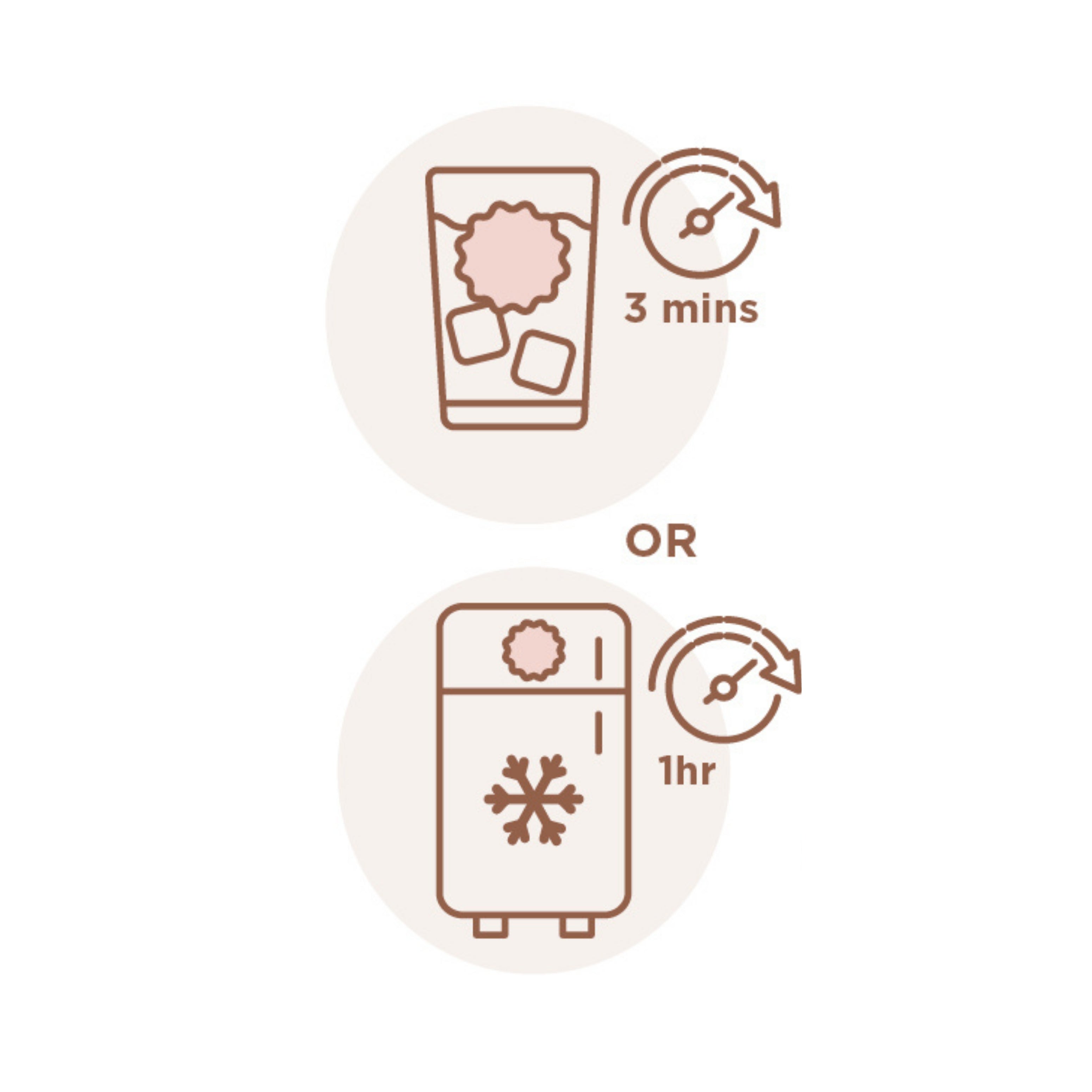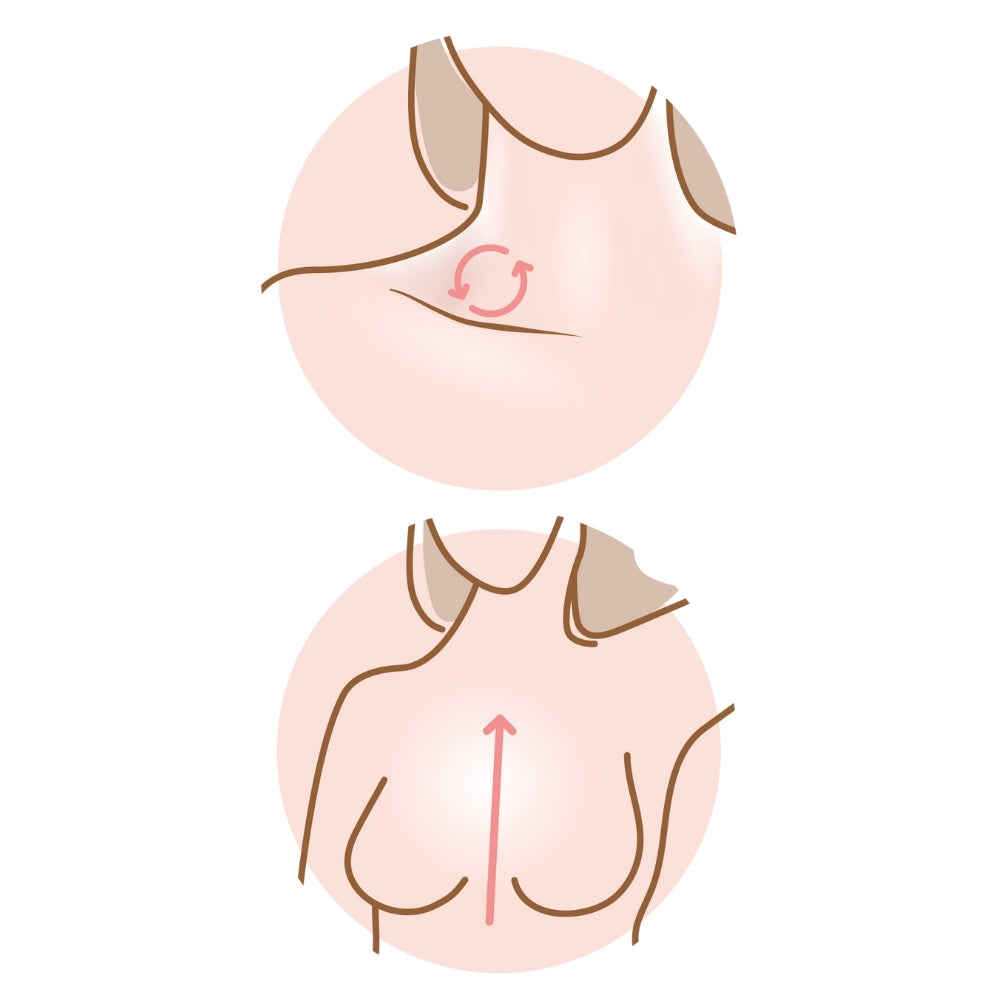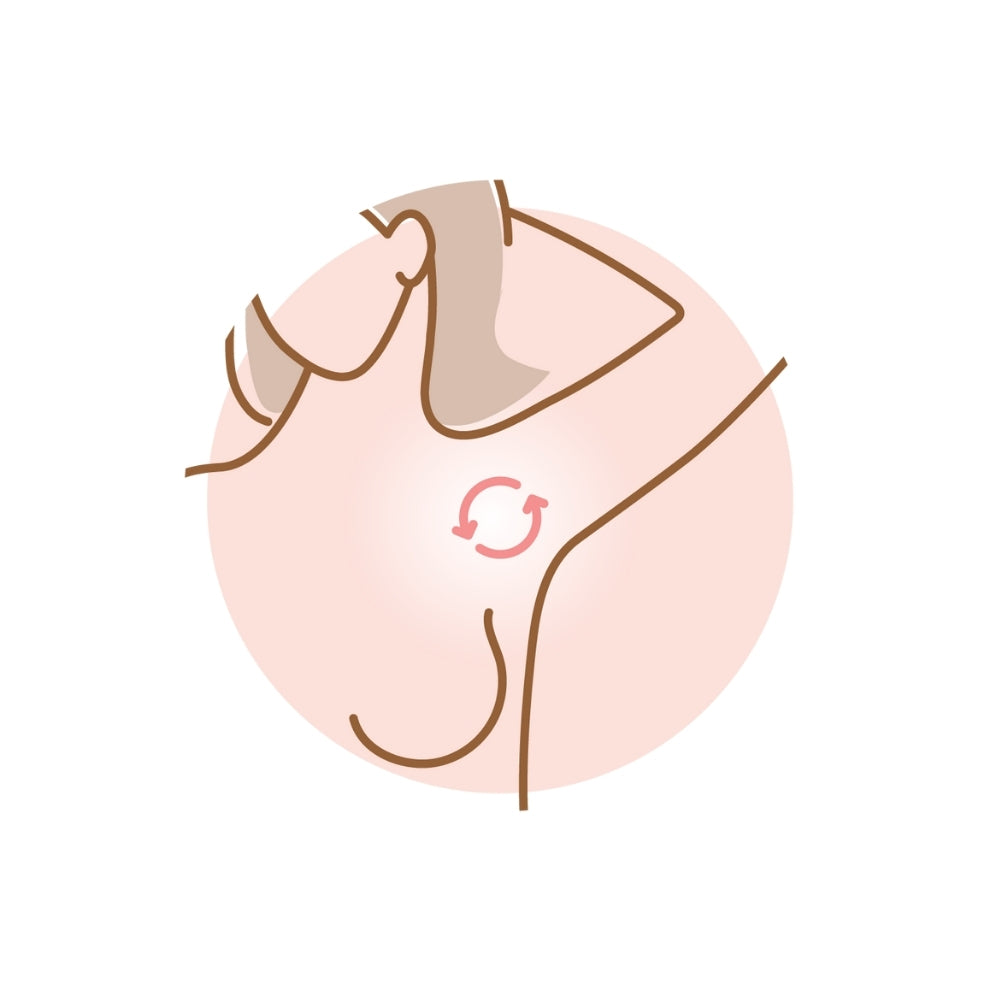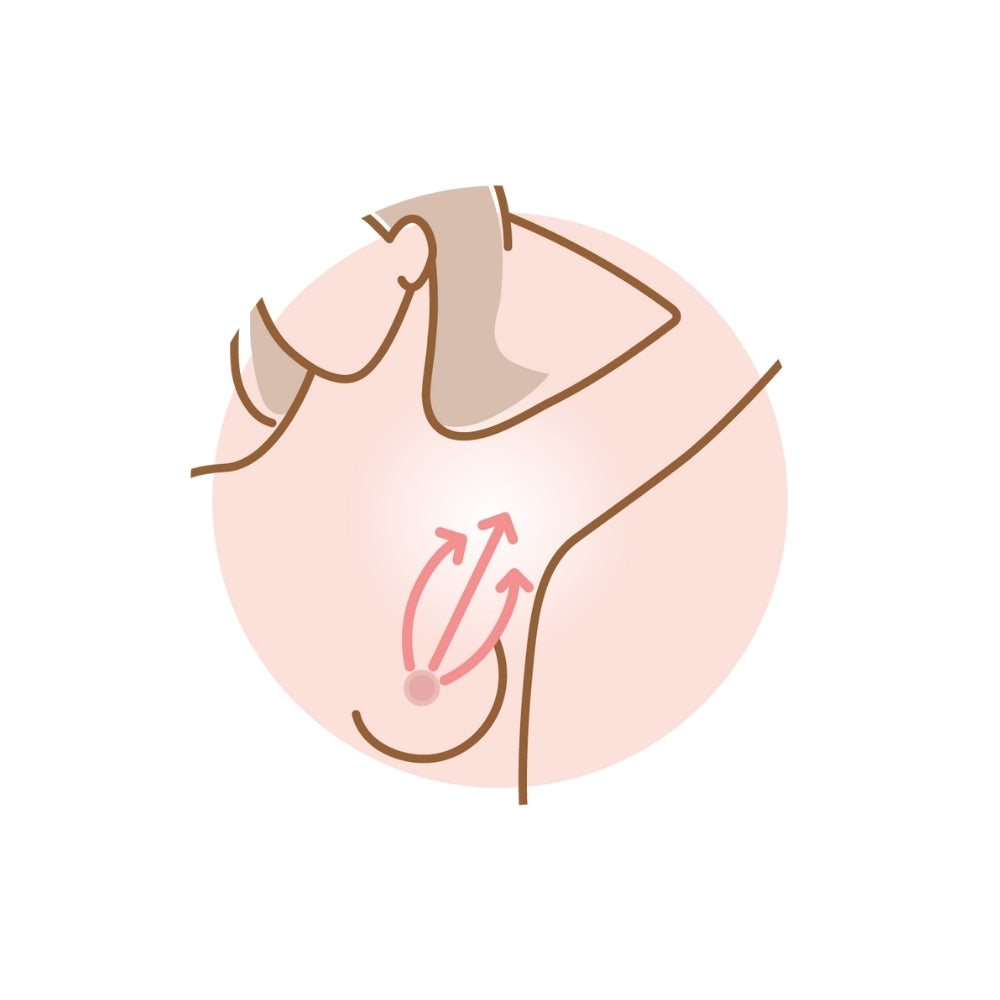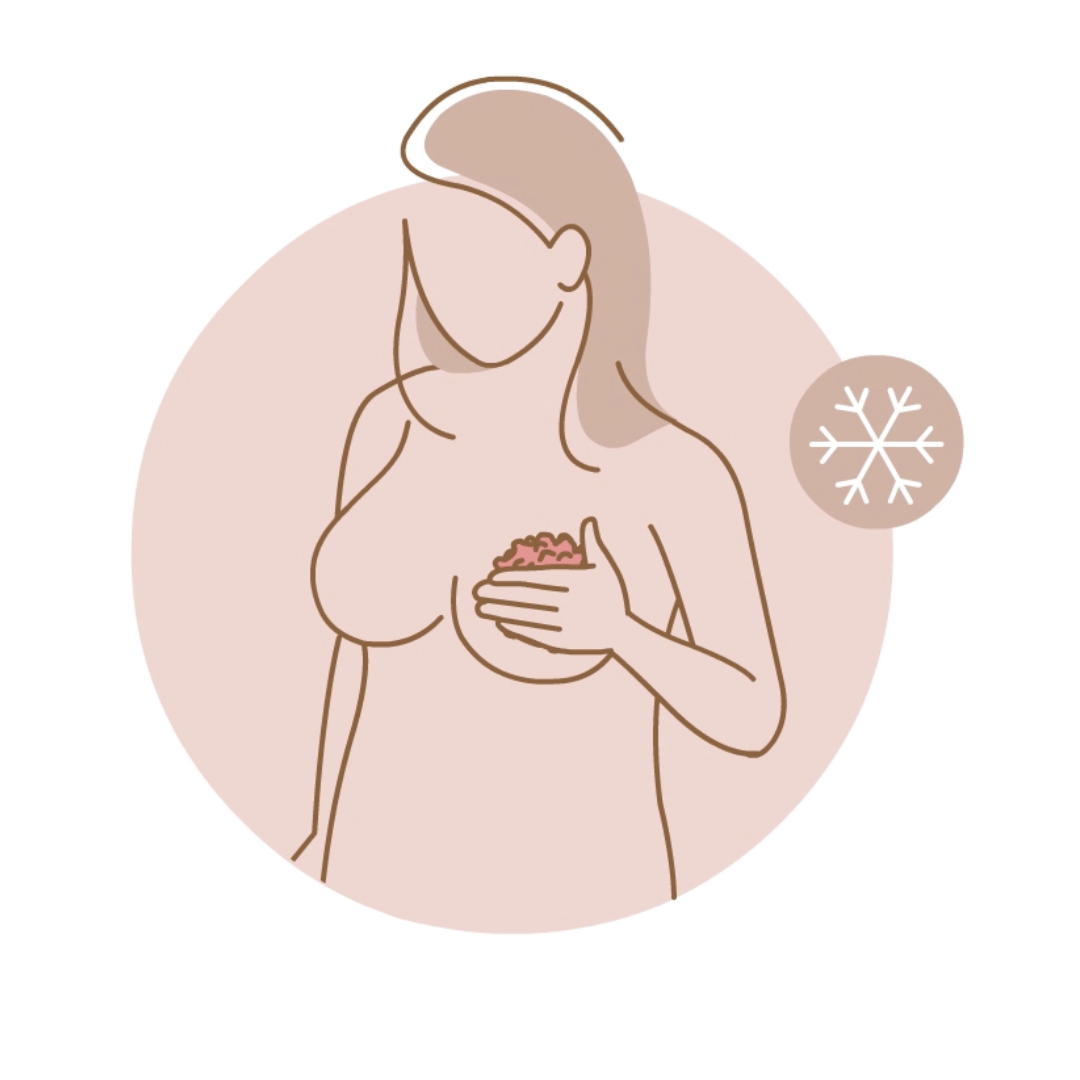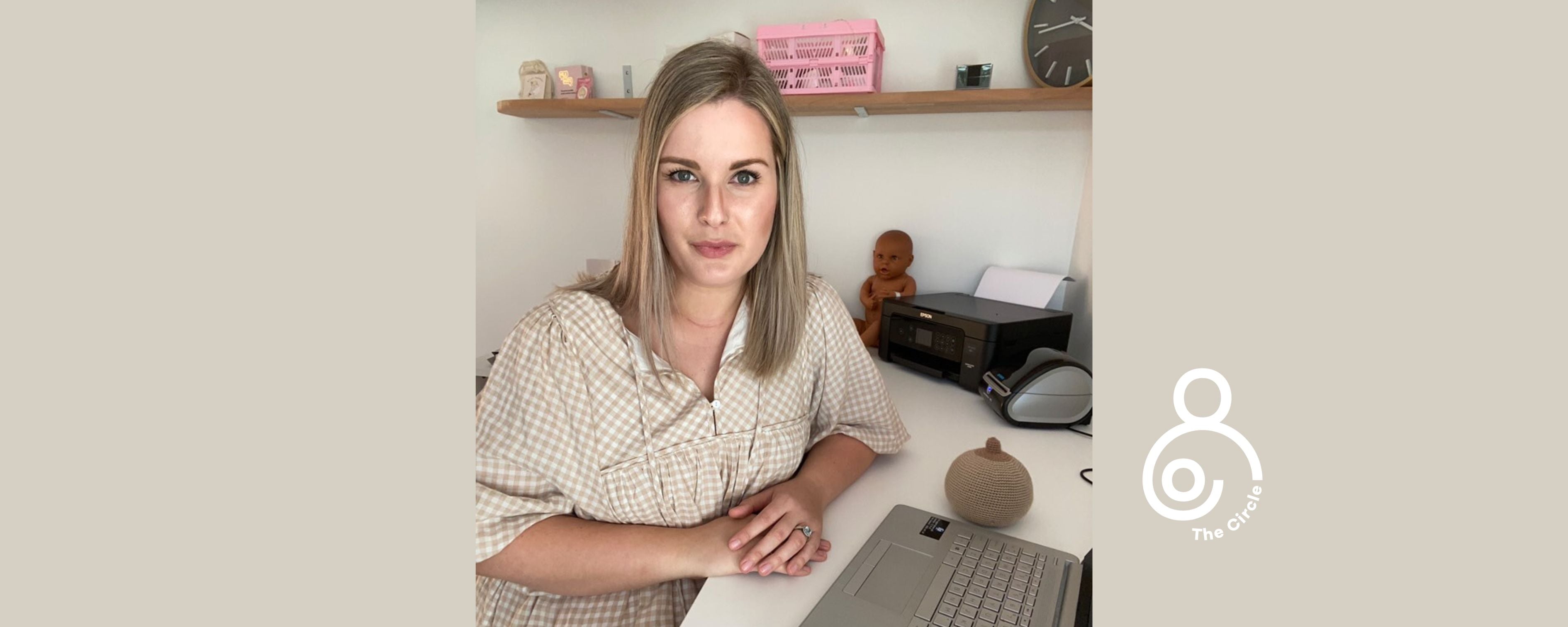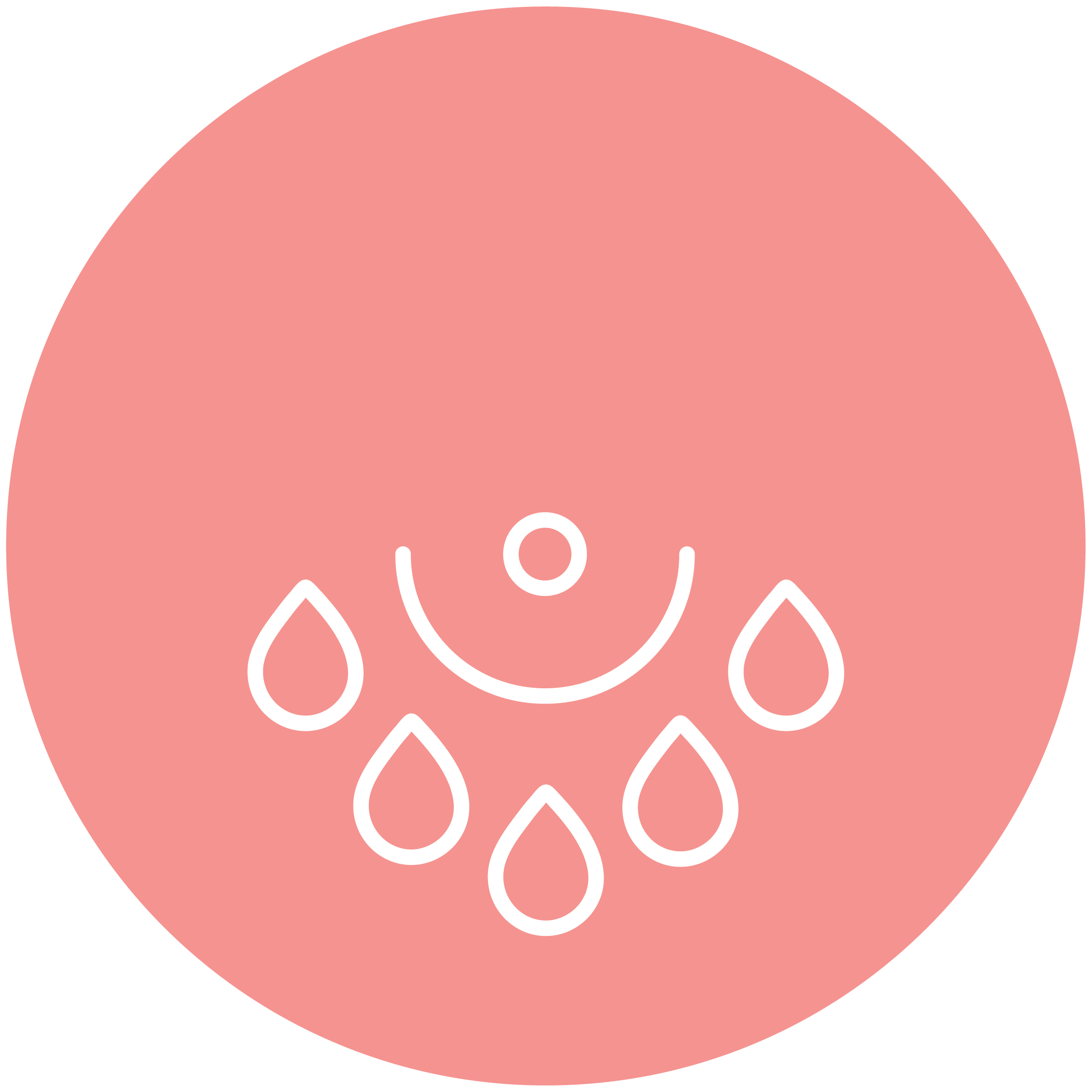
What is oversupply?
In the first six weeks after birth, many mamas experience breast milk oversupply, which is when their bodies make more milk than their baby needs. This is actually normal, and your supply will usually settle down to match your baby’s requirements. That means, for many mamas, oversupply is a temporary problem – hooray! But some mamas find themselves with an over-abundant milk supply beyond those first weeks, which can be frustrating, uncomfortable and downright upsetting.
Some mamas with oversupply struggle with their let-downs because their breasts are so engorged. In these cases, Lactamo can be used before, after and between feeds for lymphatic drainage. “Breast massage can be extremely beneficial if you experience engorgement or oversupply,” says midwife and nurse Caitlin Murphy. On the flip side, some mamas find their let-down is too strong. Hand expressing a little milk before a feed can make the flow easier for your baby to cope with.
Additionally, mamas with oversupply are at greater risk of milk stasis, where milk builds up in the breast, which can lead to engorgement, blocked ducts and mastitis. Midwife, nurse and lactation consultant Kate Visser says that gentle breast massage with a Lactamo can help break the milk up and send it in the right direction, as well as provide relief for sore spots.
Easy to follow animation
Using Lactamo for oversupply
Using Lactamo when you have oversupply: six easy steps
FAQ
Having an oversupply can be both a blessing and a challenge. Many mothers choose to store excess milk using proper milk storage guidelines. This stored milk can be a great backup for times when you're away from your baby or when supply might dip. Donating to milk banks is another option; there are many babies, especially premature ones, who benefit from donated breast milk. Lastly, try to regulate your feeding and pumping routines to signal your body to produce just the right amount. Consultation with a lactation specialist can provide tailored strategies to manage oversupply.
In many cases, oversupply can correct itself as the body adapts to the baby's needs. As breastfeeding regulates and the baby establishes a feeding routine, the breasts often adjust production accordingly. However, if oversupply continues and becomes problematic, it's beneficial to seek guidance from a lactation consultant to implement techniques that help regulate milk production.
Pumping can contribute to oversupply if done excessively. The breast responds to demand; the more milk is removed, the more it produces. If a mother frequently pumps large amounts in addition to regular breastfeeding, it might signal the body to produce even more milk. It's essential to strike a balance between maintaining supply and not overstimulating production.
The duration of oversupply varies among mothers. For some, it might only be a short phase during the early weeks of breastfeeding when milk "comes in" robustly. For others, it might persist for longer. With proper management techniques, most mothers find that their supply balances out within a few weeks to months. It's always advisable to monitor the situation and consult with a lactation specialist if oversupply poses challenges.
- Experiment with different breastfeeding positions. Leaning or lying back can help your baby better control the flow. Side-lying positions in bed can be helpful, too.
- Managing engorgement. Some mamas with oversupply struggle with engorged - which in turn may lead to other problems, for example with their let-downs. Lymphatic drainage is a good way of managing oversupply and engorgement, and Lactamo is designed to facilitate this, specific to the needs of your breast. “Breast massage can be extremely beneficial if you experience engorgement or oversupply,” says midwife and nurse Caitlin Murphy. On the flip side, some mamas find their let-down is too strong. Hand expressing a little milk before a feed can make the flow easier for your baby to cope with.
- Consider your feeding pattern. There are several feeding patterns mamas with oversupply can try to reduce their supply. Raisingchildren.net.au suggests letting your baby feed from one breast for as long as they like, making sure the breast feels well-drained before offering the second one. A lactation consultant can devise an individualised feeding plan that works for you and your baby.
- Make sure you’re comfortable. If oversupply is making you uncomfortable, by all means, hand express a little milk to ease the pressure. But make sure you don’t express more than you need to, as it will just encourage your breasts to produce more milk.
- Use a breast pad or a cloth to catch leaking milk rather than a silicone milk collector. Silicone milk collectors use negative pressure, drawing out more milk than just the let-down; using a cloth to catch the excess doesn’t stimulate more milk production.
- Manage your risk of milk stasis. Mamas with oversupply are at greater risk of milk stasis, where milk builds up in the breast, which can lead to blocked ducts and mastitis. Midwife, nurse and lactation consultant Kate Visser says that gentle breast massage with a Lactamo can help break the milk up and send it in the right direction, as well as provide relief for sore spots.
The amount of milk our bodies make is determined by demand. If a lot of milk leaves our breasts, whether via feeding or expressing, they get the message to keep making lots more. So, mamas who time feeds, express on top of their regular feeds or have a baby who wants to suck a lot for comfort may end up with an oversupply. Prolonged use of a silicone milk collector, medication or herbal remedies designed to increase milk supply when they’re not needed (‘just in case’) can also lead to an oversupply.
Of course, our bodies are all unique and work in slightly different ways, and some mamas just happen to make more milk than others. While it’s not known exactly how many mamas experience oversupply, as midwife, nurse and lactation consultant Kate Visser explains, “a true oversupply is rarer than we think it is, and it doesn’t happen very often. There’s more often an issue around babies feeding well, and mums really need good support with what a good breastfeed looks like.”
Because the signs and symptoms of various breastfeeding issues can be very similar, sometimes it’s hard for mamas to know what on earth is going on! If you suspect you have oversupply, get in touch with a lactation consultant for a professional diagnosis. A mistaken self-diagnosis of oversupply can lead to the opposite problem – low milk supply – if a mama takes action to reduce her supply when it’s actually within the normal range.
- Your breasts fill up quickly and feel lumpy or tight, even after a feed.
- Your baby gags, gulps or coughs at the start of the feed because the flow of milk is so strong and abundant. This is how oversupply can sometimes lead to breast refusal.
- Your baby will often not take the second breast.
- Your baby has more than the usual number of wet nappies, and poos a lot too. The poo might be green and frothy and maybe even ‘explosive’.
- Your baby cries a lot between feeds and seems to have a tummy ache or wind.
- Your baby has rapid weight gain.


